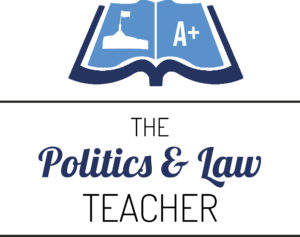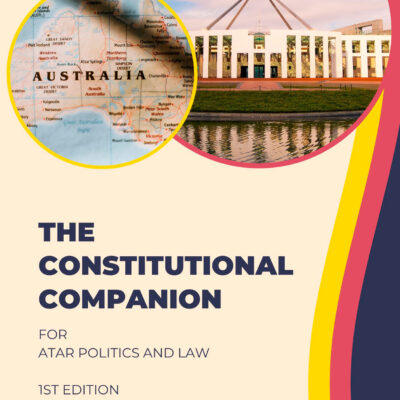This blog post supports Infographic 2/21, published in May 2021.
Industrial relations is a key ideological difference between the Coalition parties and the Labor Party. Consequently, industrial relations reforms proposed by either of the major parties triggers intense political debate, giving rise to political and legal issues which can dominate the national conversation. The economic impacts of the COVID-19 pandemic and two recent court decisions have prompted the Morrison Government to attempt new industrial relations legislation.
Past attempts by the Coalition to reform industrial relations have triggered intense political division. The most well-known example is the Howard Government’s WorkChoices reform in the last of its four terms in office (2004-2007). WorkChoices was a fundamental reform of Australia’s industrial relations laws. Made under the corporations power – Section 51(xx) of the Constitution, it involved an effective constitutional takeover of industrial relations powers by the Commonwealth – which the States unsuccessfully challenged in the High Court in 2006. The new laws radically changed the relationship between employers and employees to the advantage of the former. The opposition Labor Party strongly opposed WorkChoices and was supported in the 2007 election campaign by the Australian Council of Trade Unions (ACTU). The ACTU’s $20 million advertising campaign, called Your Rights at Work, was amongst the most successful in history. The new laws were very unpopular. The Coalition government lost office and Mr Howard became only the second Prime Minister in Australian history to lose his seat. The Rudd Government immediately repealed WorkChoices and replaced it with the Fair Work Act, which remains the key piece of industrial relations law in Australia. Ever since the Coalition has been reticent about reforming industrial relations.
The pandemic provided an opportunity to look again at industrial relations when lockdowns damaged the economy and created mass unemployment. Coalition reforms to the Fair Work Act were passed in a spirit of bipartisanship and with the ACTU prepared to work constructively with the government. The changes enabled the payment of the temporary JobKeeper support payments. See PAL News Update V3N3 Mar/April 2020 – The ACTU influences law-making in Parliament, Unions win changes to government bill protecting workers’ rights.
One of the lessons the government learned from the pandemic reforms was that industrial relations reform was possible through a consensus approach involving various stakeholders. This lesson emboldened the Coalition to attempt further reform.
Meanwhile, two individuals influenced lawmaking in the courts. Their Federal Court cases developed the common law regarding casual employment. In WorkPac Pty Ltd v Skene [2018] FCAFC 131, the Federal Court changed the common-law definition of casual employment – See Infographic Figure 1. The Fair Work Act contained no definition of casual employment, so the common law “essence of casualness test” had been developed to fill the gap. The common-law test consisted of a number of elements that the court considered when deciding if a particular case represented casual employment. To pass the essence of casualness test, work had to be irregular, uncertain, discontinuous, intermittent and unpredictable. Paul Skene argued that the nature of his employment did not meet the elements of the test. He was employed by a labour-hire company, WorkPac, on casual contracts in the mining industry. He argued that the nature of his employment was predictable, relatively certain and ongoing – and so more like permanent employment. The Federal Court agreed. The court ruled that the nature of work was more important than the form of the contract – in other words, the permanent nature of Paul Skene’s employment overruled the fact that his employment agreement was a casual contract.
Two years later, in 2020 Robert Rossato used the Skene precedent to argue that his employment under a series of six year-long casual contracts was more like permanent employment. Permanent employees have entitlements to leave, such as sick leave and long service leave. Rossato claimed that because his employment was permanent under the Skene interpretation of the essence of casualness test, and had lasted continuously for six years he was entitled to back pay for unpaid leave entitlements – See Infographic Figure 2. He argued that his casual loading – an extra payment paid to casual employees to compensate for lack of leave entitlement – did not compensate him for lost entitlements. In WorkPac Pty Ltd v Rossato – [2020] FCAFC 84, the Federal Court agreed. The Rossato precedent meant that many tens of thousands of casual employees were potentially able to claim backpay in circumstances similar to Rossato. Employer groups reacted, saying the new common law could expose them to huge compensation claims in future cases.
Minister for Industrial Relations, Christian Porter responded to the concerns of employers, claiming they could be exposed to over $40 billion in claims for unpaid leave – See Infographic Figure 3. The Morrison Government decided to reform industrial relations laws to include a legislated definition of casual employment. A new definition of casual employment in the Fair Work Act would override the common-law “essence of casualness test” – holding the courts accountable to parliamentary legislation. Mr Porter also said the new laws would allow employers to offset any unpaid leave entitlements a court may award in future cases. See PAL News Update V4N1 Jan/Feb 2021 – Court defines casual work – Parliament to legislate.
Having decided to reform industrial relations laws in response to Skene and Rossato, and with the experience of successfully dealing with stakeholders in its earlier COVID-19 reforms, the government pressed ahead with more ambitious proposals. Mr Porter invited stakeholders to participate in five “roundtable meetings” to discuss reform. The participating pressure groups would have an opportunity to influence lawmaking in parliament. Each round table dealt to discuss a separate industrial relations matter. Stakeholders included pressure groups representing big business, small business and employees – the Australian Chamber of Commerce and Industry, the Business Council of Australia and the ACTU were amongst the groups included. Disagreements amongst the groups did not prevent the government from incorporating significant proposals in an ambitious industrial relations omnibus bill. The government claimed many of its reforms would ensure Australia’s economic recovery from the impacts of COVID-19.
The Fair Work Amendment (Supporting Australia’s Jobs and Economic Recovery) Bill 2021 passed the House of Representatives and was introduced into the Senate on 23 February 2021. The Labor Party and the Greens opposed the bill in the Senate. Consequently, the Senate crossbench would decide the fate of the bill. Crossbench minor parties and independents were divided, leaving Senator Stirling Griff (SA, Centre Alliance) to decide the fate of the bill. Senator Griff said he would use the balance of power to reject elements of the bill that the ACTU opposed. His decision gutted the bill and left only the new definition of casual work and a government proposal to outlaw wage-theft as the two measures with sufficient Senate support to pass.
The government withdrew the bill, amended it in the House of Representatives to include only the casual employment definition and other minor matters, and reintroduced it to the Senate. Senators were pressured to amend the stripped-down government bill to incorporate the anti-wage-theft proposal – which the government originally proposed and then withdrew – but were defeated by the Coalition and Pauline Hanson’s OneNation party. Consequently, a much reduced industrial relations bill passed the Senate on 18 March 2021 – See Infographic Figure 4.
Industrial relations in 2021 is a contemporary political and legal issue. Two individuals – Paul Skene and Robert Rossato – influenced lawmaking in the courts when their Federal Court cases resulted in controversial developments in the common law of casual employment. These developments led the Liberal and National parties (forming the Coalition government) to make significant changes to industrial relations law. The lawmaking process incorporated input from a variety of pressure groups representing stakeholders in the sphere of industrial relations. The government parties attempted ambitious legislative change in parliament through the introduction of the industrial relations omnibus bill. The bill passed the lower house relatively easily but failed in the Senate because of demands made by the Centre Alliance minor party. Senate crossbenchers used the balance of power to amend the bill. In response, the government withdrew its bill, amended it and returned it to the Senate in much-reduced form. Opposition attempts to amend the bill in the Senate were defeated by the government parties and PHON. The much-simplified bill passed into law.
This contemporary political and legal issue provides an outstanding example of lawmaking in the parliament and the courts. It illustrates how individuals may influence the law through court action, and how court decisions can lead to lawmaking in the parliament. The lawmaking process in parliament provided opportunities for pressure groups 12PAL to influence lawmaking through participation in roundtable meetings. It also illustrates the power of major parties to influence lawmaking in the parliament, with the governments bill passing the lower house easily because of its dominance in that chamber. Minor parties and independence were able to significantly influence lawmaking in the Senate by first rejecting and then attempting to amend a government bill. The government took control of the process by withdrawing its bill amending it and returning it to the Senate in reduced form. Then, with the support of PHON, the major parties in government were able to block attempts by the Opposition to amend the bill.
There are also examples here of executive dominance of the lower house, the Senate balance of power, the roles and powers of the opposition and the accountability of courts through parliamentary legislation.


